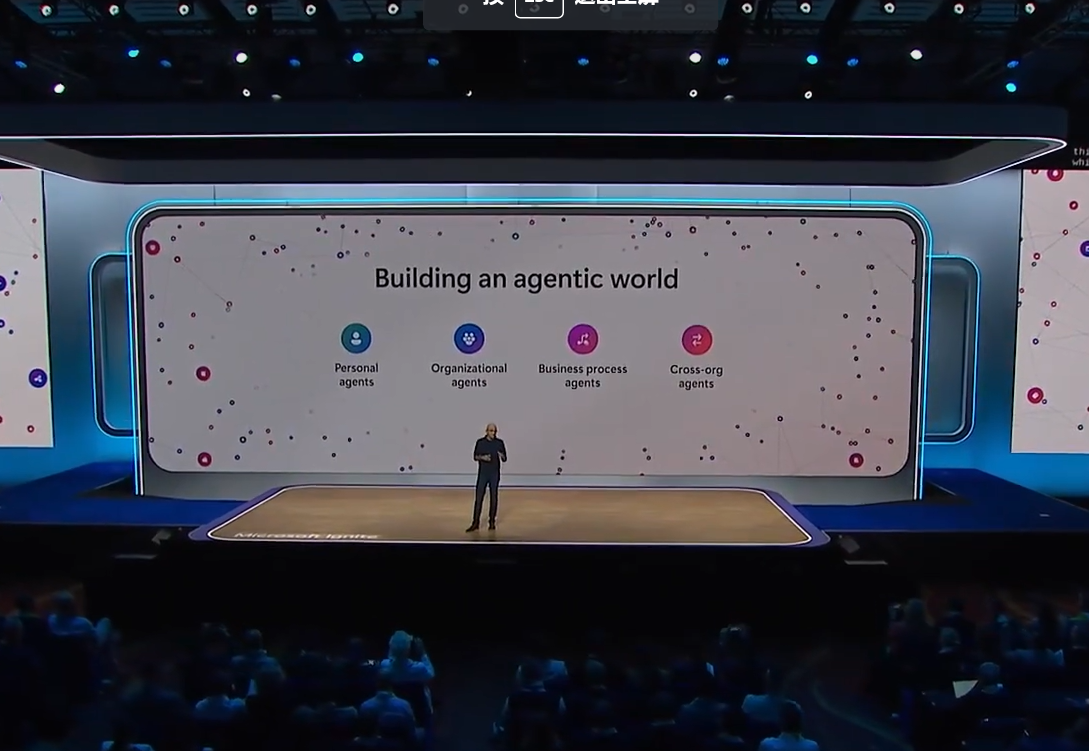2025 AI Landscape: Large Models Expand to Edge and On-device Applications, Intelligent Agents Usher in a GPT Moment
Bidding farewell to the last AI winter, the third decade of the 21st century has witnessed the birth of modern AI.
Stanford professor Fei-Fei Li, often referred to as “AI Godmother”, has described shifts in AI field as a “Cambrian Explosion” in technology. Over the past year, the paradigm shift driven by Scaling Laws has started to move beyond an obsession with sheer parameter size; the rise of multimodal generative AI has led to the launch of several blockbuster applications, opening up a new competitive space and presenting numerous possibilities for the upcoming 2025.
In December, many reports from Microsoft Research Asia, CICC, Sequoia Capital, and WIRED highlighted technology trends for the coming year. Among them, on-device LLM and AI Agent emerged as focal points for many institutions.
1. Computing Costs Decline Tenfold Each Year, LLMs Move to Edge and On-device Applications
Significant Drop in Computing Costs
The staggering investment in computing resources—often running into billions of dollars—and the high cost of inference are increasingly stifling innovation in generative AI. To unlock the next wave of technological breakthroughs, LLMs must become leaner, more efficient, and far more cost-effective. In the special issue The WIRED World for 2025, Dr. Kai-Fu Lee predicted that the year will mark a pivotal turning point. He envisions a flood of AI-driven applications, powered by models that deliver exceptional performance while being significantly more affordable.

Lee argues that the incredible spending of Silicon Valley giants such as OpenAI, Google, and xAI has created a lopsided ecosystem. The LLMs trained by these huge GPU farms are usually very expensive for inference, and these costs are ultimately passed on to every app that rely on such models. This lopsided ecosystem has made Nvidia the biggest beneficiary, while leaving application developers with difficult choices: either settle for low-cost and low-performance models that fail to meet user expectations, orpay exorbitant inference costs and risk going bankrupt.
Lee predicts that by 2025, a new approach could disrupt this stalemate. Advances in next-generation AI algorithms, updated inference and cost-effective chip technologies are poised to drive a dramatic reduction in AI inference costs—potentially achieving a tenfold decrease each year.
Explosive Growth Expected for On-device Applications
As computing costs plummet, more portable on-device AI applications are poised for rapid expansion. A research report by Dongxing Securities highlights the immense potential of the AI terminal market, spanning personal computers, smartphones, wearables, and other fields. Projections show clear growth trends in the short, medium, and long term for AI-powered devices.
In the AI PC sector, traditional PCs have nearly reached market saturation, but AI PCs, offering enhanced intelligent experiences, could unlock new growth opportunities. According to IDC, the share of AI PCs in new device within China’s PC market is expected to rise sharply over the next few years, reaching 85% by 2027 and establishing itself as the dominant player in the industry.
In the AI smartphone sector, analysis from Chinabgao.com predicts that the penetration rate of AI-powered phones will climb to 16% by 2024. By 2026, shipments of AI smartphones are projected to surpass 470 million units, with a penetration rate of 38%. The integration of LLM into smartphones is expected to drive a new wave of device upgrades, fueling growth across the entire industry.
In the AI wearable device sector, the market size is projected to grow from $41.9 billion in 2024 to $120.7 billion in 2028, with a CAGR of 30.3%. This growth is driven by rising consumer interest, further integration between AI and smartphones, expanded applications in healthcare, and the development of wearables tailored for elder care. By year-end, the debut of BUTTONS’ first AI Agent-powered earbuds, created in partnership with AIoT firm Terminus Group, and the mass production of Silicon Valley startup Friend AI’s smart necklacesignal an impending boom in intelligent wearable devices.

Continuing Expansion of Edge Computing Market
As LLMs trend toward greater efficiency and affordability, the edge computing market is also set for further growth. Recently, China Academy of Information and Communications Technology (CAICT) released the “2024 Edge Computing Industry Development Research Report”. The Report highlights that China’s edge computing market has been in a steady growth phase, with rapid expansion since 2020, achieving an average annual growth rate of over 40% in recent years.
In June 2024, Chongqing’s first provincial-level key laboratory on edge intelligence was officially launched. The lab, a collaborative project between Terminus Group and the Chongqing Institute of the Chinese Academy of Sciences, is dedicated to advancing comprehensive research on areas such as edge intelligence, intelligence of things, etc. At the unveiling ceremony, Dr. Yang Yang, the lab’s deputy director and chief scientist at Terminus Group, emphasized the growing importance of edge intelligence. He noted that the rise of 5G and its support for IoT applications have unleashed a “data storm” that is overwhelming more and more users. Increasing volumes of data are unable to upload to communication networks, while network congestion has led to severe service delays.
Dr. Andy Liu, a member of the lab’s management committee and senior vice president at Terminus Group, revealed that the company, as a leading force in China’s AIoT sector, is actively leveraging edge intelligence to promote edge and on-device large model applications. He said that Terminus Group had developed a range of edge products, currently capable of utilizing LLMs with up to 10 billion parameters. Besides, End-Edge-Cloud collaborative LLMs will meet diverse needs of clients and application contexts depending on different scenarios, he added.
1. Multimodal AI Unleashes Infinite Possibilities, AI Agent Could Give Rise to Blockbuster Applications
ØBreaking Down Barriers Between Data Modalities, Generative AI Unlocks Boundless Potential
While LLMs have pushed the boundaries of AI development, it is worth noting that leading AI companies are still grappling with considerable profitability pressures. Under such pressure, these companies are increasingly innovating to find pathways to make profits. For one thing, OpenAI unveiled its o1 Reasoning Model series in September, which employs a groundbreaking reinforcement learning approach for training based on chain-of-thought. This new approach enables the o1 model to deliver expert-level performance on tasks requiring multi-layered reasoning. Through reinforcement learning, the o1 model refines its cognitive processes, experiments with diverse strategies, and learns from its mistakes, thereby continuously enhancing its reasoning capabilities.
For another, a growing number of companies are exploring the use of artificial intelligence to facilitate mutual understanding and conversion between different data modalities. This trend suggests that by 2025, generative AI is expected to achieve seamless integration across different data modalities, paving the way for vast applications in finance, healthcare, marketing, manufacturing, entertainment, and beyond.
For instance, in healthcare, multimodal AI can integrate medical imaging, textual information such as patient records, and pathology reports to assist doctors in making more comprehensive and accurate clinical decisions. In personalized marketing, multimodal AI can deliver deeper consumer insights, empowering brands to implement hyper-personalized strategies that enhance user experience and satisfaction. By analyzing historical data and behavioral patterns, AI can predict user preferences and needs, providing tailored recommendations and significantly improving conversion rates......
ØEntrance of AI Agents into Commercial and Consumer Spaces
Against the backdrop of flexible multimodal capabilities, Copilots and AI Agent have emerged as two dominant forces driving the evolution of AI applications. These technologies are profoundly reshaping the productive relationships of the intelligent era.

At the 2024 Web Summit, which concluded in November, AI Agent was a central topic of discussion among leading tech companies and industry pioneers. Qualcomm president and CEO Cristiano Amon emphasized that AI Agent will be critical for humans to fully harness the opportunities AI offers. Meanwhile, Zhang Kuo, president of Alibaba.com, unveiled Accio, a transformative B2B AI search agent. He explained that users can ask Accio questions in plain language, and through multi-turn dialogues, the system interprets their needs. Acting like a professional agent equipped with deep B2B industry expertise, Accio breaks down requests and offers tailored solutions.

Victor AI, founder and CEO of Terminus Group, has extended the reach of AI Agent into consumer applications. On the main stage of Web Summit, AI announced the launch of Hali, the first-generation AGI Agent developed by Terminus Group in collaboration with BUTTONS. AI outlined Hali’s unique features, distinguishing it from traditional generative AI and large language models: slow thinking, long memory, perception of the physical world, and teamwork. Hali interacts with users in real time through wearable devices and seamlessly collaborates with other agents, serving as both an assistant and companion.
ØThe Trend Towards Multi-Agent Ecosystem
2024 is dubbed as the “Year of Agents”as both business scenario AI agents—deeply embedded in vertical industries—and customer servicing AI agents—tightly integrated with consumer electronics—move toward multi-agent collaboration. According to data from Grand View Research, while Single-Agent Systems (SAS) held the largest market share in 2023, the Multi-Agent Systems (MAS) segmented market is projected to achieve the highest CAGR from 2024 to 2030.
Victor AI also shared his observations on the trend towards MAS on the Web Summit stage. In his view, the future world may see the number of AI Agents far surpassing human, with each agent possessing human-like capabilities for action and thinking, while also specializing as an expert in a specific vertical field. Against this backdrop, a superior AGI Agent capable of coordinating and orchestrating all these specialized agents, and engaging in interactions with human, becomes particularly crucial.
Such AGI Agent would be able to generate multiple AI Agents through no-code workflows. Simultaneously, leveraging the thinking and planning capabilities of its underlying LLM, the AGI Agent can enable the unified scheduling and orchestration of these agents. Through simple natural language interaction with the AGI Agent, users could gain access to a comprehensive multi-agent collaborative system capable of handling a wide range of tasks, from navigation and translation to event management and business analytics.

Also in November 2024, Microsoft held its annual “Microsoft Ignite 2024” global developer conference, unveiling the latest developments in its AI Agent ecosystem. Since its launch, more than 100,000 organizations have used its Copilot Studio to create or edit AI Agents. Copilot Studio integrates with over 1,400 enterprise systems and data sources, ranging from SAP and ServiceNow to SQL databases. The rapid growth of this ecosystem is enabling seamless collaboration between AI Agents across enterprises.
1. Major Breakthroughs Expected in Visual-Spatial Intelligence
Another noteworthy development lies in the anticipated advancements in visual-spatial intelligence, which could make significant strides by 2025 while current generative AI’s multimodal capabilities remain primarily language-based.
In April, Stanford professor Fei-Fei Li and co-founder Justin Johnson officially launched their startup World Labs, focusing on spatial intelligence. In the media interview, Li emphasized that spatial intelligence is as fundamental to AI as language, positioning it as one of the cornerstones of the field. She defined the ultimate goal of AI as enabling machines to perceive, reason, and act in three-dimensional space—a concept she terms “spatial intelligence”. Li further highlighted that the future of AI must go beyond understanding text and images; it must also possess the ability to engage in complex interactions in the real world. This vision, she noted, is precisely the mission of World Labs.

According to a report by global market research firm Omdia, the global spatial computing market is projected to reach $4.5 billion by 2024 and exceed $10 billion by 2029, with a CAGR of 18%.
At the end of 2024, World Labs unveiled its first spatial intelligence AI model, the Large World Model. This groundbreaking model elevates AI capabilities from processing 2D pixel-based data to fully comprehending and interacting with three-dimensional environments, both virtual and physical. Thus artificial intelligence is able to generate, reason, and engage with 3D worlds. World Labs has also disclosed plans to launch its first product based on the Large World Model in 2025, targeting applications in AR, robotics, autonomous driving, and other domains.
Looking ahead to 2025, spatial intelligence may create a fresh competitive landscape in the AI industry, currently dominated by language models. This emerging field could provide a third pathway for AI applications, alongside Copilots and AI Agents. Will the coming year witness new architectures and models? How might the extreme compression of LLMs give rise to novel use cases? And what synergies could emerge from the collaboration of heterogeneous agents? These questions remain to be answered by time.
